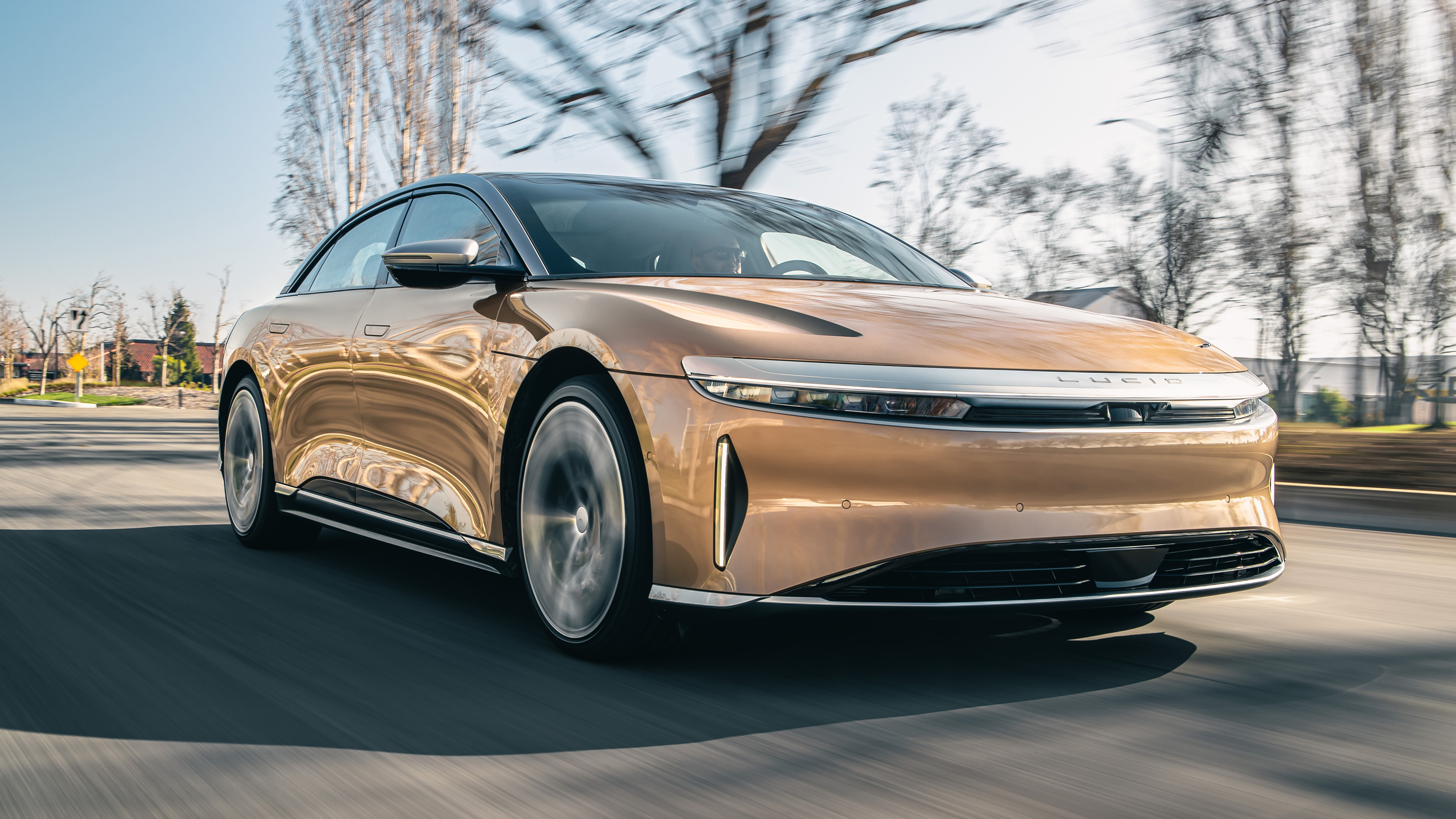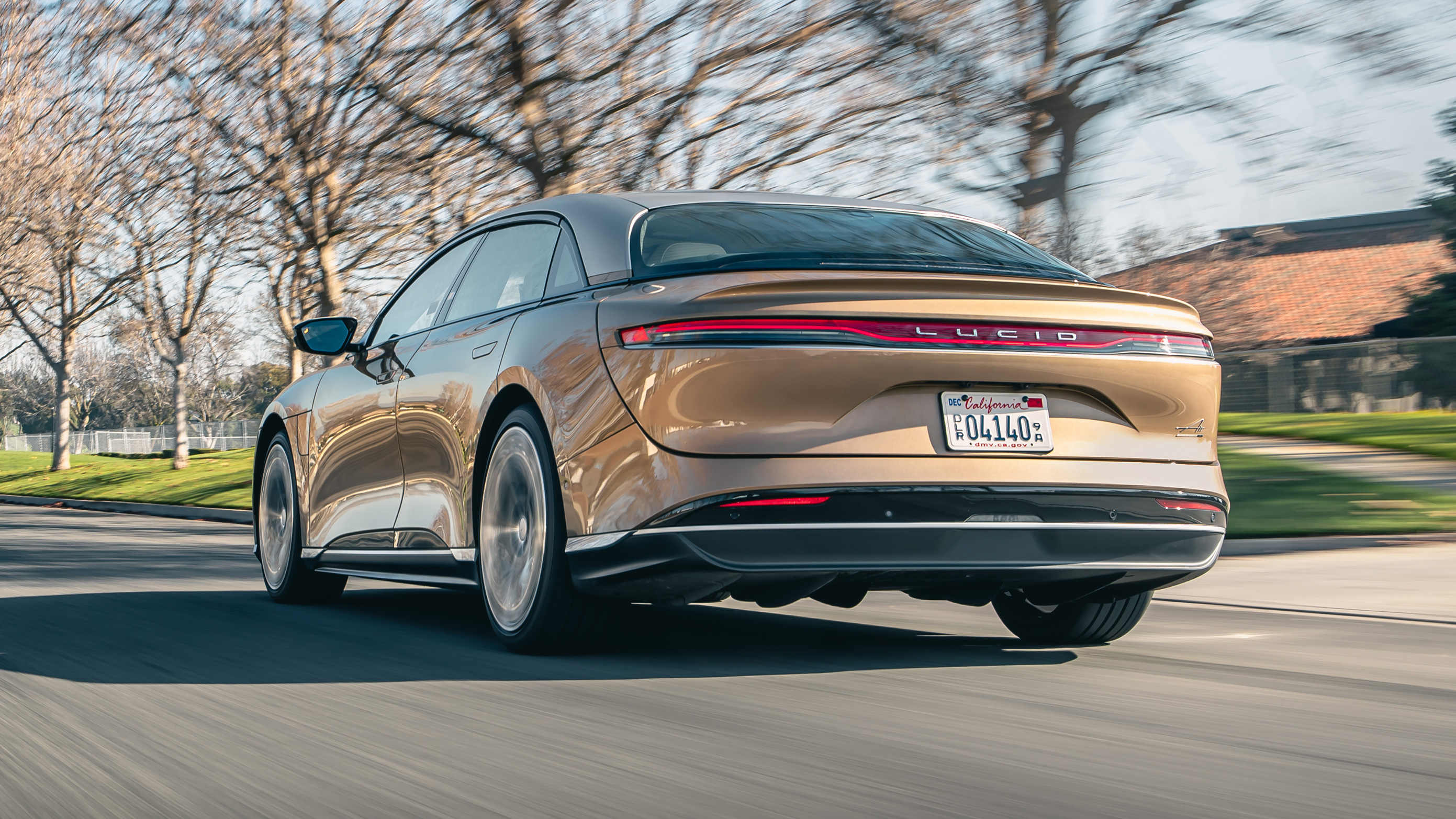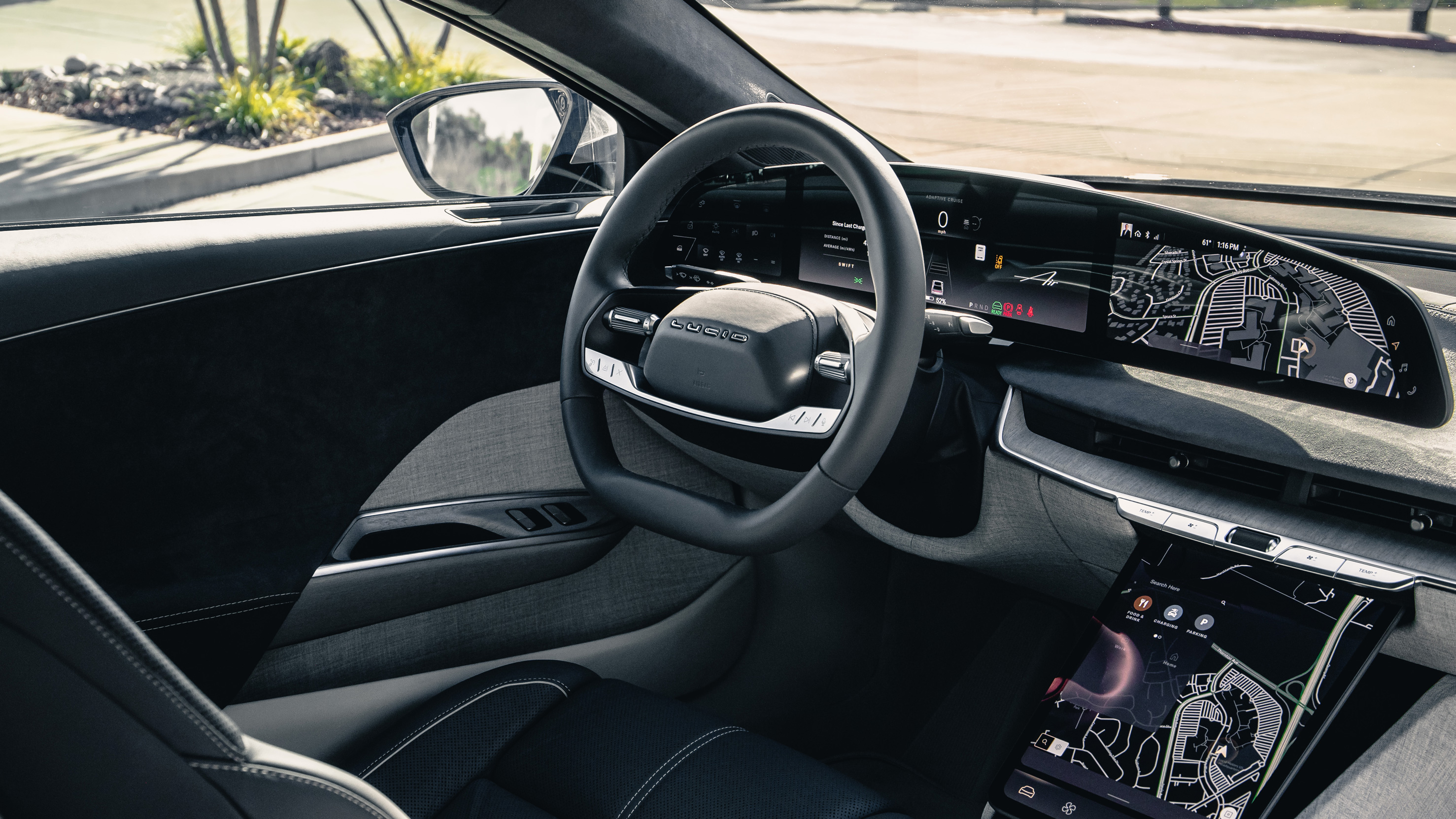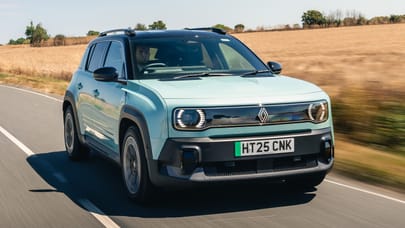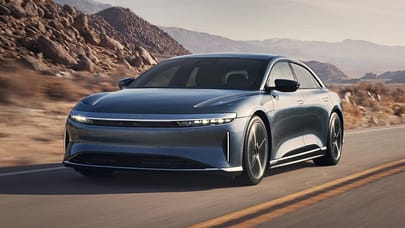
Lucid Air review
Driving
What is it like to drive?
You don't need the quarter-million-dollar Air to experience what Lucid brings to the table. The single-motor Pure is the entry-level version (and the sole rear-wheel drive option) and has its own unique characteristics. For one, it’s lighter in the front than others and thus feels more playful than the very direct all-wheel drive of the other Airs.
The Pure starts things off with 430hp, which is fairly modest by today’s standards but by no means ineffective: it just pales in comparison to the buckets of power laid down by the other models.
And it's aptly named because it's the most revealing of Lucid's fine work. Stripped of the spectacle of massive power, there is little to distract from the other qualities like the enjoyable handling. All Airs are equipped with adaptive dampers controlled through different drive modes, including Smooth, Swift and Sprint.
The Air Sapphire, with its beefier suspension setup and carbon-ceramic brakes to support that ungodly power, features a Track mode with Dragstrip, Hot Lap and Endurance options.
On the 21in wheels you see here, the Air rides fantastically; a properly supple and luxurious saloon. Optioning smaller wheels – because higher-spec Airs will insist on 20s or 21s as standard – will bring even more smoothness, as well as longer range.
How about the other versions?
The dual-motored, all-wheel-driving Touring and Grand Touring really push the Air into special car territory. Apart from some aesthetic differences, the main thing to spot is the power and range on offer. Touring and Grand Touring have 620hp and 819hp respectively, with the range of the Touring estimated to be about 406 miles. The Grand Touring hits a staggering 512 miles due to its extended range battery.
The ride throughout the lineup is all the more impressive because the Air weighs near-as-dammit 2.5 tonnes. Which, when it comes to making a car controlled and precise to drive, ought to be somewhat problematic. But Lucid’s (wisely) spent big snaring some people who know what they’re doing.
The aim was a driver-focused car, and the target – which Lucid missed thanks to various delays – was to be the first EV with stability control that can be loosened. A proper line in the sand. The Porsche Taycan got there first, in the end, but that doesn’t make the Air a dud.
Say more about the Sapphire.
Gladly. 1,234. That’s the easy-to-remember amount of horsepower on tap. We’ve said this before but it bears repeating: it can go from 0 to 60mph in less than two ticks of your watch. Phwoar.
What’s really the difference between that and the Grand Touring’s merely dual-motored output? In a real-world setting, not much, as the 819hp in that version is just as brain-melty. But upwards of 1,000hp on essentially a luxury daily driver is just dumbfounding. You will not find the upward limits of this car, period.
David Lickfold, a chassis man flown over from JLR when Lucid was starting out, was keen to make a car that responded intelligently to your needs. It’d prioritise range when it knew you were cruising – slipping into two-wheel drive and softening the throttle – then spark itself into life when it sensed you pushing on.
So, the more the Air’s numerous algorithms sense you giving it a good go on a rural road, the more power they’ll send to the rear axle. The maximum torque split is 30/70 front/rear, and even with the stability control in ‘Partial’ you can encourage moderate oversteer. This car never shrinks in size or weight like the very best internal combustion sports saloons, but it’s pretty mesmerizing for the mass involved.
And whichever mode you’re in, there’s an inch of ‘are you sure?’ hesitation in the throttle to avoid whoopsie-daisies. Sneeze while in Sprint and you’ve a fighting chance of not careening across a four-way stop at twice the posted speed limit.
Another benefit of the suspension we keep going on about is that the feedback is also audible. When you’re pushing on, hearing tire limits and the motor whine is invaluable, and it’s something many EV makers view as an issue to resolve. They then do the usual sound-proofing and opt to pipe in faux noises to fill the void. No so with the Air, which gives this particular EV a touch more authenticity than the rest.
You haven’t mentioned battery sizes…
Like Tesla, Lucid is a bit cagey when it comes to battery sizes. We know the Sapphire uses a 118kWh unit; Pure and Touring cars are thought to get 92kWh, with Grand Tourings running a 112kWh battery. Useful intel for your charging maths.
Not that you really need a calculator: on a rapid charger you can accrue 300 miles of range in 20 minutes.
Variants We Have Tested

Trending this week
- Car Review
BMW iX3




